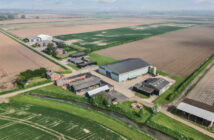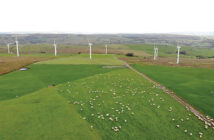An exceptionally warm February has contributed to the earliest start to a pollen beetle migration since records began. Pollen beetle numbers recorded as part of Rothamsted monitoring surveys are currently well below threshold level. However if temperatures rise then increased pollen beetle activity could coincide with green-bud, the most damage-susceptible growth stage of oilseed rape.
Sam Cook, senior research scientist at Rothamsted Research, says that an integrated pest management (IPM) approach is vital to combatting pollen beetles.
“If in the next few weeks temperatures exceed 15°C for a couple of days, then it is possible that increased pollen beetle could coincide with the green-bud growth stage. IPM for pollen beetle is really important in order to increase the efficiency of insecticides and reduce their unnecessary use.”
Given the early start to migration, Claire Matthewman, campaign manager at Bayer, agrees that a vigilant and integrated approach will be necessary this season. Even putting yellow sticky traps out in the fields acts as a practical tool for population monitoring, she says.
“Monitoring both the crop and local weather data will go a long way to understanding the risk in your area. Also check plant population and the corresponding pollen beetle threshold, as this serves as a protection against unnecessary crop spraying.
“Due to the increasing resistance to pyrethroid insecticides, in cases where pollen beetle populations exceed thresholds and need treating, use a product with no known resistance issues, such as Biscaya (thiacloprid), which also allows for flexible treatment where crops are uneven.”
Dr Cook adds: “A joint project between Rothamsted Research and ADAS, funded by AHDB, has shown that most pollen beetle populations rarely exceed threshold. The project also found that spraying below threshold is not linked to yield increase. Of far more concern, unnecessary spraying increases selection pressure to insecticides and damages populations of the natural enemies (predators and parasites) that attack pollen beetles and cabbage stem flea beetles – so I can’t emphasise enough how important it is to only spray when necessary.”




